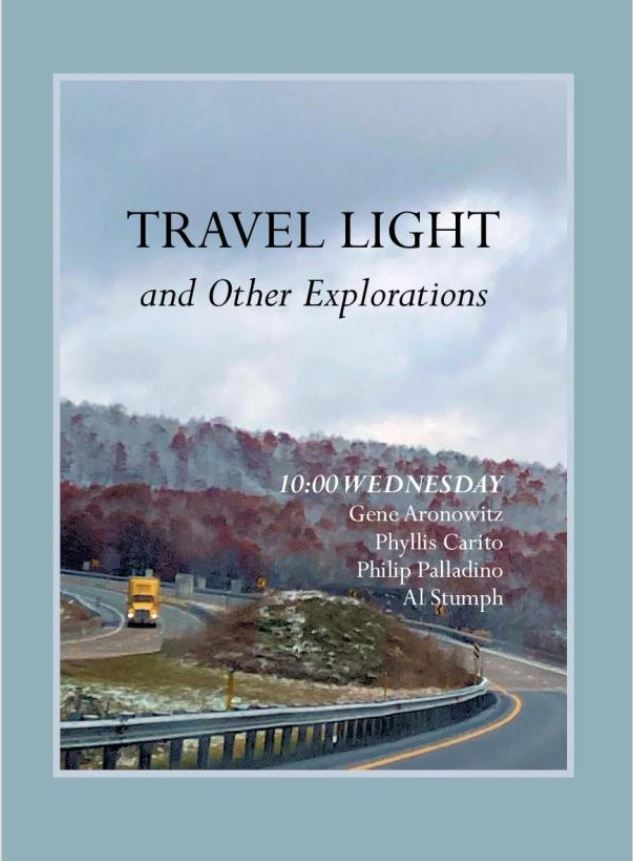Cycling and Street Safety
By Gene Aronowitz
My bicycle riding was episodic in the extreme for a half-century.
In July 1981, after not riding a bicycle for 22 years, I trained for two weeks and took a 474-mile ride, chronicled in my memoir My Ride to Annie’s House. Then after another 29-year hiatus, my wife, a friend, and I rode in New York City’s 40-mile Five Boro Bike Tour. I was terribly out of shape, and we stopped well before completing the ride. But sharing this extravaganza with about 32,000 others convinced me to return to cycling in earnest.
I wanted to find people to join me on rides. In June 2010, I went to a meeting of the Brooklyn Volunteer Committee of Transportation Alternatives (T.A.), a New York City cycling and street-safety advocacy organization. One of the committee’s goals was to get the city to establish a bike lane on 5th Avenue in Brooklyn, a half block from my house. The Chair of the committee, Paco Abraham, asked the members to write letters to their elected officials to get support for the initiative. I had been a public official and knew what kinds of letters worked and wrote to my City Council Member, Sara Gonzalez. Paco distributed my letter as an example of terrific advocacy writing, and he asked me to lead the 5th Avenue initiative. It wasn’t long before I became Vice-Chair of the Committee.
The staff of T.A. became aware of my advocacy skills and frequently asked me to speak at press conferences and give testimony before the City Council and Community Boards. They particularly prized my involvement because I was 73 years old then, and serious cycling was rare for people my age. In addition, I had severe osteoarthritis in both knees, which made walking difficult and running impossible. Riding was my road to health, and I was in an excellent position to say so. T.A. wanted an enhanced bike-lane network throughout the city to reduce the number of cyclist and pedestrian fatalities; they put me out front in that effort. A year later, because of all my advocacy activity, I was profiled in T.A’s Reclaim Magazine and was later honored to be named their Volunteer of the Year. Since there were about 1000 volunteers, I considered that an honor of considerable significance.

We were able to get a shared bike lane on 5th Avenue as well as other enhancements. The Brooklyn Committee, which included most of the city’s most prominent cycling and street-safety activists, was very effective. There were four other committees, each focusing on a single New York City borough. However, they didn’t get much done. Consequently, the management of T.A. decided to reorganize and establish specific roles, responsibilities, and processes for the committees. They wanted each committee to focus on one or maybe two goals, imposed or approved by management. Initially, they said the Brooklyn Committee would be exempted from the new policies because it was so successful, but then changed their minds, opting, I assumed, for consistency or perhaps trying to avoid antagonizing members of the other committees. I objected, first to the staff member responsible for our committee and then in a meeting with the leadership. The Executive Director told me they would not change their policy. I was disappointed and upset at the thought of giving up a process so effective. The Brooklyn committee didn’t have one or two goals; we had many, each reflecting the interests of some of our members. That’s what made it so exciting, keeping everyone interested and involved. I have always thought that volunteering involved the luxury of doing what I enjoy, and it was clear that I would not enjoy the new structure. I resigned from the committee but stayed connected with T.A. by providing street-safety workshops for older people.
In these workshops, I talked about being aware of impediments such as potentially crippling potholes and inattentive or drunk drivers. Many participants had balance or vision issues and slow reaction capabilities, and I thought there were steps they could take to minimize the danger associated with those infirmities. They were attentive and responsive because I was their contemporary. During the first couple of workshops, I timed the participants to see whether they could safely walk fast enough to cross the average traffic-lighted street. I stopped testing them because they all saw it as a competition and walked faster than they ever would on the streets. Some even ran.
I continued doing the workshops until 2015, when my knees finally gave out, and it became too painful for me to travel around the city. I had both knees replaced that year.
After six months of rehab, I finally got back on my bike and, to celebrate, rode on the 5th Avenue shared bike lane we had championed. Unfortunately, within five minutes, a van drove past me, close enough to hit the mirror on my handlebar, nearly knocking me over. I thought about my new knees and possibly brittle hips and considered the collision a sign that I had become too old to risk a fall on the streets of New York City.


